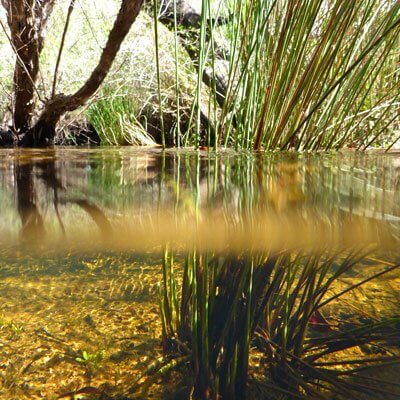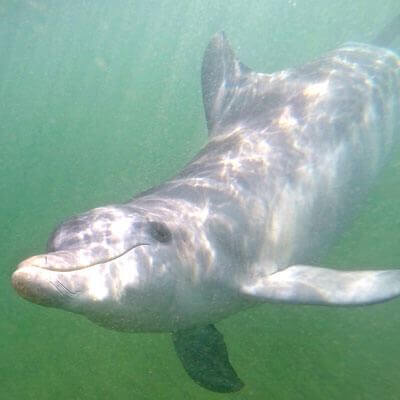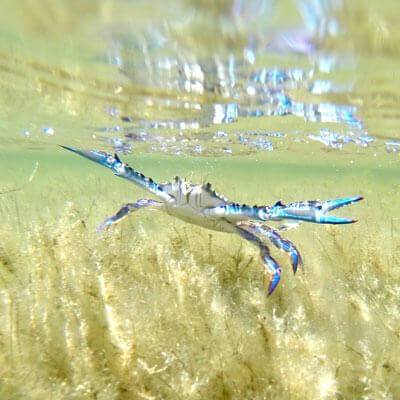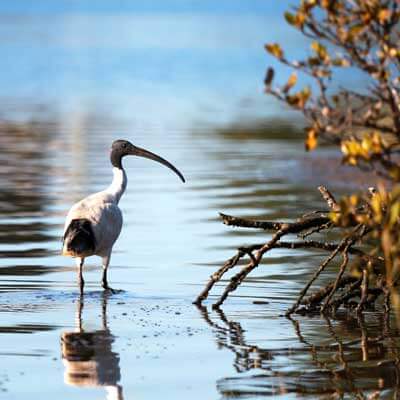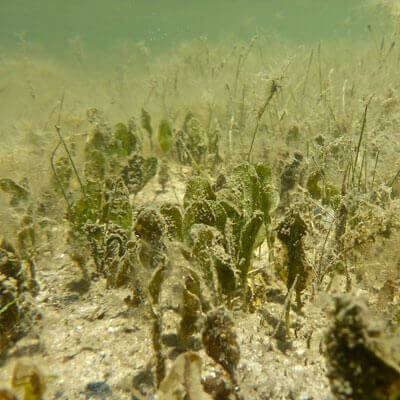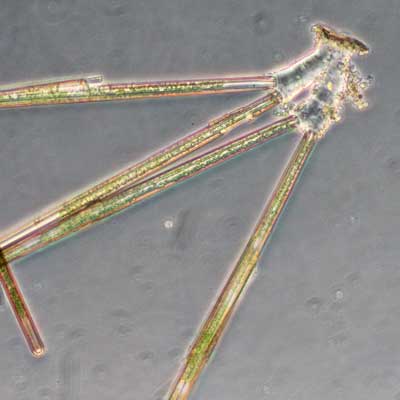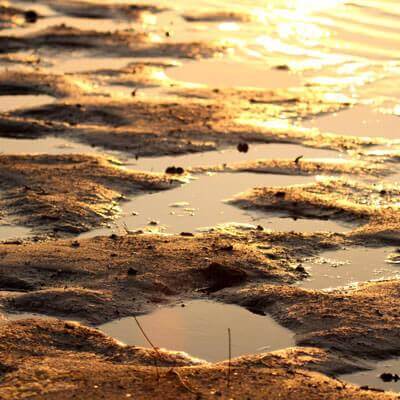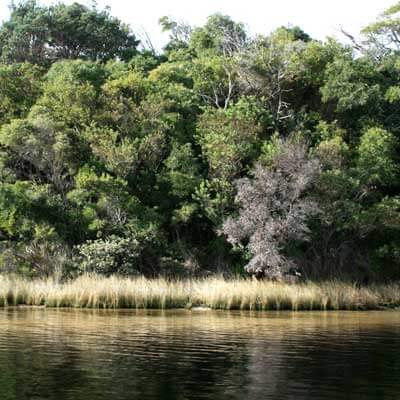Fish and Crabs
Fish
The Leschenault Estuary provides a diversity of habitats for fish, including seagrasses, sand and mudflats to saltmarshes. These different habitats offer protection and a variety of food sources for a range of fish – many of which spend all or part of their lifecycle in the estuary.
Previously, the estuary supported a productive commercial fishery. Targeted fish species included:
- yellow-eyed mullet (Aldrichetta forsteri)
- sea mullet (Mugil cephalus)
- King George whiting (Sillaginodes punctate), and
- yellow-finned whiting (Silago schomburgkii).
In the late 1990s it became apparent that commercial fishing was driving down the estuary’s fish populations and commercial licences were bought back as part of a fisheries adjustment scheme by the Department of Primary Industries and Regional Development.
A study by Murdoch University of fish populations in the Leschenault Estuary showed that the spatial distribution of species largely reflected the different environmental conditions across the estuary as well as habitat preferences for the different fish species. Forty-three species live in the estuary basin. Species that live their whole lifecycles in the estuary, were more abundant in the central and northern basin – areas less influenced by freshwater flows. Species that moved out to the marine waters for part of their lifecycle, were found closer to “the cut”. Diversity and abundance of fish were generally greater in vegetated habitats.
A number of fish deaths have been reported for the Leschenault Estuary and its estuarine rivers. All of these have occurred in the estuarine reaches of the Collie, Brunswick and Preston rivers. In nearly all cases, low oxygen was the main cause of the fish deaths– triggered by the sudden collapse of a phytoplankton bloom.
Crabs
The Leschenaut Estuary is home to one of the south-west coast’s major populations of blue swimmer crabs. These crabs are a widely distributed tropical species – they are found this far south thanks to the influence of the warm waters of the Leeuwin Current.
The estuary provides an ideal mixture of habitats for these crabs, including areas dominated by sand, mud, seagrass and algae. By day the crabs hide in their burrows beneath the sediments and at night they use their paddle-shaped hind legs to swim with the currents to find food. Seagrass and algal habitats provide protection from predators such as stingrays, and supply a diversity of invertebrates for the crabs to feed on.
Commercial crabbing in the Leschenault Estuary ceased in 2001 when a Voluntary Fisheries Adjustment Scheme was put in place by Department of Primary Industries and Regional Development following ongoing community concern over perceived declining catches. The estuary still supports a major recreational crab fishery, and recreational crabbers are frequently seen in the estuary’s shallow waters.

